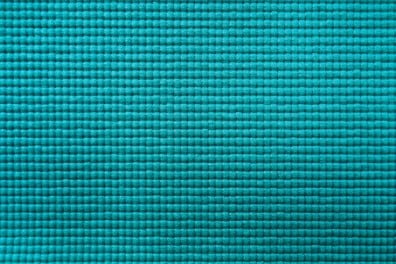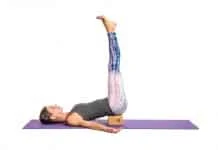It seems a bit difficult to choose a yoga mat from an online shop. So we will explain how to pick the best online yoga mats.
Time for a new yoga mat? Let us help you choose the right one! Not all yoga mats on online shops are created equal, so make sure you know what kind is right for you.
Thickness
The first thing that you have to do for online yoga mats is, ask about the thickness or you can see on the mats detail
Why it’s important: The thickness of your yoga mat has a lot to do with how comfortable it is — too thin, and your knee may get banged up during a crescent lunge. The tradeoff is that thick yoga mats (some as thick as 1/4 inch) can make it harder for you to feel a strong connection to the floor, making you more wobbly in Tree Pose, for example.
Options: A standard yoga mat is about 1/8 inch thick, while the thickest is about 1/4 inch. There are also wafer-thin yoga mats, or people call it “travel yoga mats,” that are a mere 1/16 inch thick. They fold easily and don’t weigh much, making them a cinch to fit in a suitcase.

Basic buying guide: Consider how much room you have to stow your yoga mat, how important portability is, and where your sweet spot is on comfort versus being able to feel a direct connection to the floor. If you’re short on storage space, have a long schlep to the studio, and like the feel of just a little padding, opt for a standard-depth mat, in the 1/8 inch range.
If you don’t mind carrying and storing a little more heft for the sake of more cushioning, consider a premium yoga mat that’s about 1/4 inch thick. And if you absolutely must be able to pack your yoga mat in a suitcase or carry-on, get yourself a foldable travel yoga mat in the 1/16 inch range.
Material
The second thing that you have to be aware of for online yoga mats is, ask about the material or you can see on the mats detail
Why it’s important: The material your yoga mat is made of dictates its texture, stickiness, eco-friendliness, and sponginess (how much it yields to pressure), and how it wears over time.
Options: Most standard yoga mats are made of PVC, otherwise known as vinyl. Newer, more earth-friendly options include natural and recycled rubber, jute, and organic cotton or natural cotton (which means the fabric is not treated with synthetic finishes during manufacturing).

Basic buying guidelines: If you’re allergic to latex, avoid yoga mats made of natural rubber. If you want to stick with the tried and true sticky mat, choose a yoga mat made out of PVC, which can endure your use and abuse for more than a decade. Sponginess can vary widely with different blends of materials, but in general, PVC has the most “give” of any yoga mat material; jute and cotton have the least.
Beyond these fundamentals, read on and let your other priorities — texture, stickiness, and eco-friendliness — be your guides.
Texture
The next thing that you have to be aware of online yoga mats is, ask about the material or you can see the mats’ detail.
Why it’s important: The texture of your yoga mat dictates how much traction it provides. Like stickiness, texture affects how much slipping and sliding you do. It provides physical barriers to sliding (whereas stickiness relies on suction). And because texture affects the way a yoga mat feels, it’s also a component of overall comfort.
If you’re a Princess-and-the-Pea type, any bumpy texture will likely aggravate you in savasana. Texture can be either man-made (a pattern of raised bumps, for example) or dictated by the materials — jute yoga mats have an organic roughness to them, while PVC yoga mats, though slightly textured, have a softer feel.

Options: There’s a yoga mat texture to suit every whim — from completely smooth to downright rough.
Basic buying guidelines: If you’re looking for a yoga mat that prevents slipping and you’d like to avoid PVC mats (the traditional sticky yoga mats), look for a rubber, jute, or cotton yoga mat that has a raised, tactile pattern.
The added grip the raised texture provides can help you stay put no matter how sweaty or vigorous your practice gets.
If smoothness is of prime importance to you, a PVC yoga mat is the way to go. And if you relish stickiness but are curious about the newer, more earth-friendly options, test drives a few before you buy.
Some eco-friendly yoga mats may surprise you with how much traction they provide even though they don’t have the traditional “sticky” feel.
Stickiness
Why it’s important: A sticky yoga mat keeps you from sliding all over the place and helps you maintain your alignment as you move from one pose to another, as well as when you hold poses for several seconds.
Options: PVC yoga mats have the highest sticky factor.
Basic buying guide: If you need help staying put in your poses but you bristle at the thought of practicing on a yoga mat with a raised texture, a PVC yoga mat is probably your best bet. Just remember that these yoga mats are only sticky when they are clean, so make sure you care for your yoga mat properly. If you buy a PVC yoga mat, wash it before you use it, and use a handy yoga wash cleaner whenever you notice your hands sliding forward in downward dog.
Eco-Friendliness
Why it’s important: As yogis, we hold dear the tenet of ahimsa or non-violence. That makes practicing on a yoga mat that will ultimately end up clogging a landfill for decades to come troublesome.
Options: Earth-friendly yoga mats are typically made from natural or recycled rubber. These yoga mats may also include natural materials, such as jute or organic cotton.

Basic buying guide: If eco-friendliness is important to you, avoid yoga mats made of PVC (the traditional sticky mat), which does not break down in landfills and is difficult and costly to recycle. Rubber, jute and, cotton yoga mats, while available in a range of thicknesses, tend to be thicker and slicker than PVC mats. You can get an eco-friendly yoga mat, has a thickness that meets your needs for comfort and portability, and has a texture (such as a raised geometric pattern) that prevents slippage.
Price Range
Typically, a basic for online yoga mats are 1/8 inch thick, plain solid-color PVC sticky yoga mat will be toward the low end of the price range. From there you may pay more for patterns, designs, or logos; premium thickness; antimicrobial treatments; and cool textures, especially raised tactile patterns. Eco-friendly yoga mats tend to be toward the high end of the price range.
Style
Once you’ve narrowed your choices down by thickness, material, texture, stickiness, eco-friendliness, and price, there’s only one factor left: style! So go ahead and pick your favorite color, pattern, or print. After all, you’ll be seeing a lot of it in downward dog. Happy shopping!
Take all you’ve learned, and shop the online yoga mats to find your perfect fit!
CLICK HERE For More Course Inclusions and Our June Main Event















































